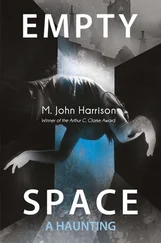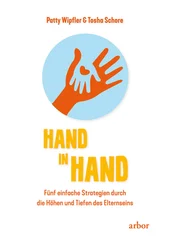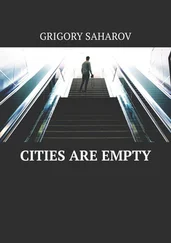The Shitō karate developed by my father contains the traditional Okinawan hand-fighting techniques of the Shuri-te and the Naha-te. Apart from some small technical differences, it is a typical feature of the Shuri-te kata that they consist of many effective and fast attack and defense movements designed for long-distance fighting. For the Naha-te kata, close-distance fighting is typical, with “heavy” movements and a special breathing technique derived from Chinese Fukien kempō5. Having such a broad basis it is easy to find the appropriate kata for any age and any kind of physical condition. This is the great advantage of Shitō karate.
Long kata include about 70 different techniques, shorter ones about 20. A short kata does not take more than one minute. During kata practice literally every inch of the body moves, so that results can be seen very soon. Men get strong and well-balanced bodies and women also become more beautiful. No space, no special devices or clothing is needed. So there is no easier method to improve the state of health. Even very busy people should be able to afford the few minutes a day needed to keep fit by kata practice. Some may think that they are already too old for it. But in principle one can start practicing kata at any age. Most of the masters of karate from Okinawa and mainland Japan enjoyed a long life.
The Physical Effects of Karate
I myself could be regarded as living proof. I am now 83 years of age. I have never been seriously ill. Several times a year I travel overseas to supervise karate training. I never feel any jetlag and always start practicing with the young karateka the next morning after my arrival. 6
In 1938 my father published the book Introduction into Attack and Defense Techniques in Karate Kempō.7 He stressed the positive effects of training, writing: “Karate helps to gain more pleasure in all other activities”, “Weak persons can strengthen their body practicing at home”, “Sick and overweight persons get strong muscles and become healthy”, “One drinks less alcohol in the evenings and one works more efficiently at day”, or “Neuralgia and mental weakness get cured”.
My father actively propagated karate as an excellent means to protect and strengthen health. In cooperation with a medical university he could scientifically prove the positive physical effects by blood tests and urinalysis. In his book there are extracts from a research report on the physiological effects of karate by marine physicians. According to their report the metabolic functions and nerve reflexes, the sense of balance and the muscle power were improved. The whole physical condition was harmonized. Thus, the positive influence of karate practice on the body was sufficiently proven.8
When his book was published my father had already been living on mainland Japan and propagating karate for ten years. He had brought from Okinawa a rather spiritual and even religious karate. Present-day karate is unfortunately very far from the one he wanted to spread. In his opinion, practicing karate for self-defense did not only require the training of fighting techniques but also a supporting spiritual and mental education. At the end of the book he wrote: “Once you will be confronted with a situation that demands action you will be able to act.”
Karate in Dangerous Situations
Several times I had the experience of spontaneous reactions towards sudden danger. When I was 16 or 17 I went with a friend to the Shirahama beach in the Wakayama prefecture. We wanted to enjoy the view of the Senjōjiki cliffs. I was wearing a swimming suit, and I just turned my back to the sea and fixed my belt when I was suddenly hit by a huge wave. My friend, facing the sea, saw the wave coming and ran away. But I could not see it and was fully stricken. In this very moment I understood that a wave had swallowed me and that my body had lost its freedom, and so I clung instinctively to the rocks the breakers had thrown me against. Had I allowed the wave to draw me into the sea I would not have survived. Many people have lost their lives this way.
Towards the end of the Greater East Asia War9 I was stationed on the Philippine island of Cebu. When the American troops had landed there with considerable force, we had to flee together with the Japanese settlers to the central highlands. We had to march at night because in daylight American reconnaissance aircrafts were cruising over our heads. So we were marching in total darkness, one hand touching the belt or the shoulder of the man in front. Suddenly I slipped and fell down the slope. When I regained consciousness I found myself about 15 feet below the path, and I was gripping my knapsack. Astonishingly I had remained uninjured. I thought: “Maybe it’s not such a good idea to stay behind.” Then I climbed up the precipice as quick as I could and managed to join the others. I remember that again I thought how helpful it was to practice karate. Once more my body evidently had spontaneously reacted to the sudden danger so that I remained unharmed in spite of the deep fall.
There were many similar occasions, maybe less dramatic, in my life to make me realize that without karate I could have lost my life or at least would have been seriously injured. Some may say that my reactions were due to special training. But this is not correct because everyone can reach the same result if only the person’s karate practice is serious and continuing.
Karate as a Spiritual Martial Art
Karate has changed more and more into a competition sport. This is one of the reasons why the number of women practicing karate mainly for self-defense has recently considerably decreased. But besides health care, self-defense was the original aim and is still a very important aspect of karate.
When my father taught at the Meijō Girls College, he invented two special self-defense kata for girls. One was called Meijō kata according to the name of the school and meaning “bright star”. The other was called Aoyagi (green willow) referring to elegance and gentleness. These kata were made for real combat. They contain techniques against typical attacks towards women like embracing from the front or from behind, and punches that use the energy of the attacker. But these real-combat kata are very short and not appropriate for competition and therefore unfortunately not very popular in our days.
Recently, I read an article in the newspaper Asahi Shimbun. It was about a high school boy in Ōsaka who was at home when a burglar came in and attacked him with a knife. But the boy was clever enough to evade the attack and managed to escape. Afterwards he told a reporter, “When I saw the knife my body reacted spontaneously. If I had not practiced karate I would have been paralyzed by fear.”
To use karate for self-defense, it is not enough to study a number of techniques. One has to develop a special mental energy, ki,10 necessary to mobilize the abilities in the very moment they are needed, that is, just when one is confronted with sudden danger. No matter how often one may have practiced the techniques, without this energy one cannot make use of them. That is why the mental education is so important.
The development of ki is important for all kinds of martial arts, such as jūdō, kendō or iaidō. The mental education is needed to get rid of any inner agitation or inner tensions and to become able to focus the whole mental energy on one point. Since karate is aiming at the ability to defend the own body with empty hands flexible mental energy is extremely important. For this reason one can consider karate as martial art of the soul (ki no budō).
Of course the physical condition affects the general development of a person. It could be said that people who are lacking physical self-confidence are apt to mental and psychological weakness. Because karate practice develops the whole body, even people who begin in a rather weak condition can gain strong physical confidence after a short time, building the basis for mental and psychological strength.
Читать дальше












